Related Research Articles

Irena Grafenauer is a Slovenian flute player and soloist, a pupil of Boris Čampa, Karlheinz Zöller and Aurèle Nicolet.
The Jožef Stefan Institute (JSI) is the largest research institute in Slovenia. The main research areas are physics, chemistry, molecular biology, biotechnology, information technologies, reactor physics, energy and environment. At the beginning of 2013 the institute had 962 employees, of whom 404 were PhD scientists.
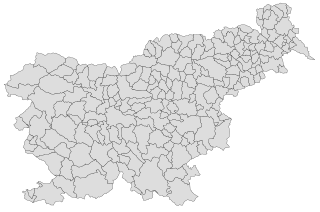
Slovenia is divided into 212 municipalities, of which 12 have urban (metropolitan) status. Municipalities are further divided into local communities and districts.
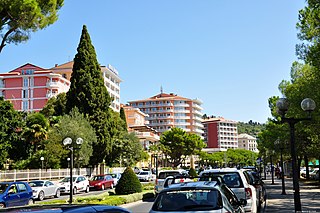
Portorož is a Slovenian Adriatic seaside resort and spa settlement located in the Municipality of Piran in southwestern Slovenia. Its modern development began in the late 19th century with the vogue for the first health resorts. In the early 20th century Portorož became one of the grandest seaside resorts in the Adriatic, along with Opatija, Lido and Grado, then as part of the Austrian Littoral. It is now one of Slovenia's major tourist areas. Located in the centre is the Palace Hotel, once one of the most important resorts for the Austro-Hungarian monarchy, and currently one of the finest hotels between Venice and Dubrovnik.

Miroslava "Mira" Stupica was a Serbian actress best known for her work in the theater, but also had extensive career on television and in films. Enjoying the enduring popularity for over 60 years and celebrated as the ‘actress of the century’ by her peers, she is considered one of the best Serbian actresses of all time.

Miroslav Radman is a Croatian biologist.
The Prešeren Award, also called the Grand Prešeren Award, is the highest decoration in the field of artistic and in the past also scientific creation in Slovenia. It is awarded each year by the Prešeren Fund to two eminent Slovene artists, with the provision that their work was presented to the public at least two years ago. In general, it may be given to an artist only once, and can also be given to a group of artists. It is given on the eve of the Prešeren Day, the Slovenian cultural holiday celebrated on the anniversary of the death of France Prešeren, the Slovene national poet. On the same occasion, the Prešeren Fund Awards or Small Prešeren Awards are given to up to six artists. The awardees also receive a financial award, with the Prešeren Award three times as high as the Prešeren Fund Award. In recent years, the awards have been increasingly given for lifetime work.
The Jakopič Award, also known as the Rihard Jakopič Award is an art award in Slovenia awarded each year for achievements in the fine arts children's literature. It has been bestowed since 1969 by the Ljubljana Academy of Fine Arts and Design, the Museum of Modern Art and the Slovene Fine Artists' Association. It is awarded on 12 April, the anniversary of the birth of the painter Rihard Jakopič after whom it is named.
Piran Coastal Galleries is a public institution, encompassing a group of six contemporary art galleries. Three galleries are located in Piran, two of them in Koper, and one in Venice. The institution is the center of contemporary art in Slovenian Littoral, one of the four most influential art galleries in Slovenia, and the only one having an outpost abroad, in Venice. They present Slovenian as well as international contemporary artists, keep a rich art museum collection, publish art books and catalogues of exhibitions, and manage a library of modern art. The institution produces over one third of the countries entire gallery program.
The Archaeological Society of Slovenia is a non-governmental organization that unites Slovene archaeologists on a voluntary basis. The society organises presentations of new archaeological research, lectures and study trips, and publishes the Slovene Archaeology Society Bulletin, as well as Arheo Journal. Its members participate in international conferences and symposia. Every year the Award of the Archaeological Society of Slovenia is bestowed to individuals for professional achievements.
The Jenko Award is a literary award in Slovenia awarded each year for the best poetry collection in Slovene published in the previous two years. It has been bestowed since 1986 by the Slovene Writers' Association. It is named after the 19th-century Slovene poet Simon Jenko.
The Veronika Award is a literary award in Slovenia awarded each year for the best Slovene poetry collection of the year. It has been bestowed since 1997 by the Municipality of Celje at the Veronika Festival that takes place at Celje Castle. The festival and the award are named after Veronika of Desenice, wife of Frederick II, Count of Celje, accused of witchcraft, incarcerated in Ojstrica Castle and murdered in around 1425. The winner receives a financial award. Since 2005 a separate Poetry Gold Medal is bestowed on a poet for their life achievement that has contributed to the richness of Slovene poetry, language and culture.
The Rožanc Award is a literary award in Slovenia awarded each year for the best collection of essays in Slovene. It has been bestowed since 1993. It is named after the author, playwright and journalist Marjan Rožanc.

The Levstik Award is a literary award in Slovenia awarded for achievements in children's literature. It has been bestowed since 1949 by the Mladinska Knjiga Publishing House, making it the first literary award established by a Slovene publishing house after the Second World War. It includes a prize for original works of literature, original illustrations, and non-fiction books for children.
Miroslav Zei was a Slovene biologist, specialist in marine biology, oceanography and ichthyology.
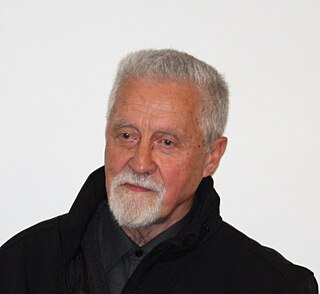
Kazimir Tarman is a Slovene professor of Animal Ecology, author of many scientific and popular science books on ecology.
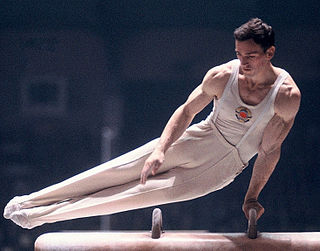
Miroslav Cerar is a Yugoslav former gymnast and lawyer of Slovene ethnicity who won the pommel horse event at the 1964 and 1968 Summer Olympics. He also won three world and nine European championships.

Zinka Zorko was a Slovenian linguist and academic. Her research focused on phonetic, theological, syntactic, and vocabulary phenomena of Carinthian, Styrian, and Pannonian dialect groups. In 2003, she was elected a full member of the Slovenian Academy of Sciences and Arts, and a decade later, she received the Zois Lifetime Achievement Award.
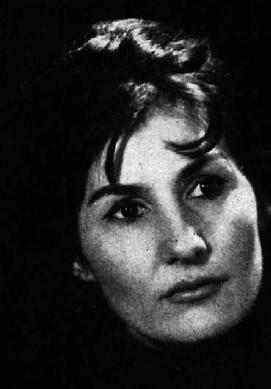
Lidija Sotlar was a Serbian-born Slovenian ballerina and teacher who was a member and a soloist of the Ljubljana Slovene National Theatre Opera and Ballet between 1948 and 1972, performing the role of 80 characters from a wide variety of ballet repertoire. She led the Lidija Sotlar Ballet Group which she established at the Central Ballet School in Ljubljana and passed on her knowledge of ballet to several generations of Slovenian dancers and established the Yugoslav Ballet Artists in 1977 that she led artistically and organisationally until 1983. Sotlar was a 2001 recipient of the Honorary Badge of Freedom of the Republic of Slovenia.
References
- ↑ Irena. "Novice". nib.si. Retrieved 12 December 2014.
- ↑ Irena. "News". nib.si. Retrieved 12 December 2014.
- ↑ HisTer. "Morska Bioloska Postaja Piran - Marine Biology Station Piran - Svečana podelitev nagrad in priznanj Nacionalnega inštituta za biologijo". mbss.org. Retrieved 12 December 2014.
- ↑ "Velika nagrada Jožetu Štirnu". Delo . 2012-10-26.